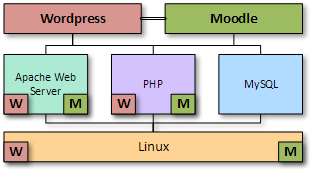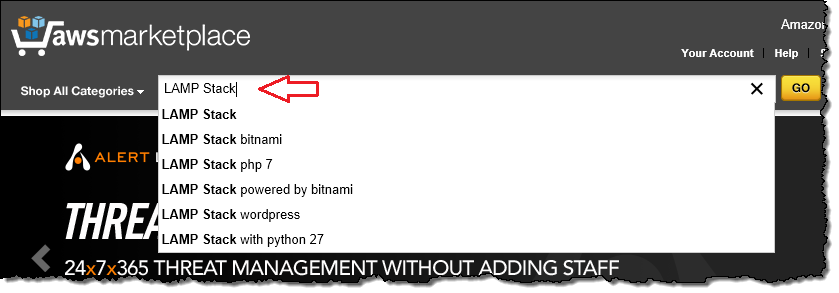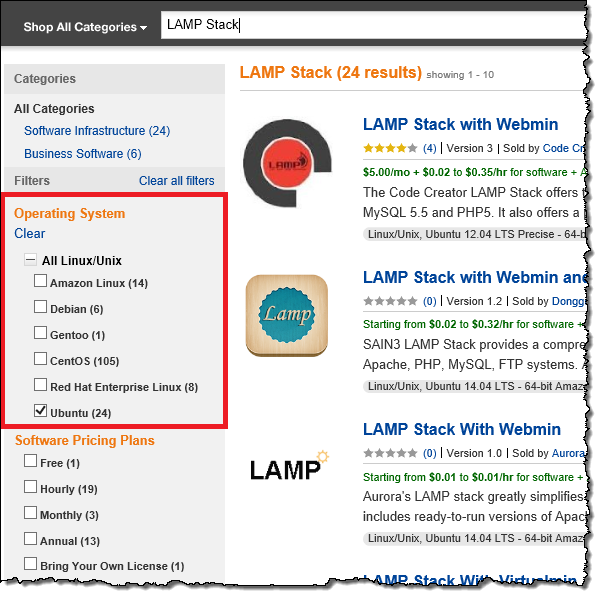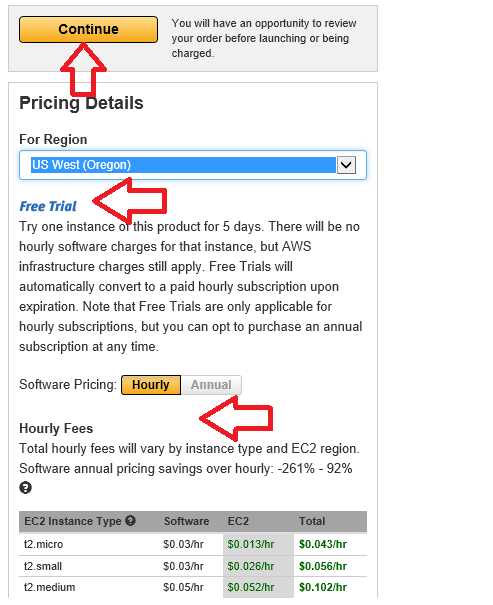AWS News Blog
Ready-to-Run Solutions: Open Source Software in AWS Marketplace
|
|
There are lot’s of exciting things going on in the AWS Marketplace. Here to tell you more about open source software in the marketplace are Matthew Freeman and Luis Daniel Soto.
– Ana
According to industry research, enterprise use of open source software (OSS) is on the rise. More and more corporate-based developers are asking to use available OSS libraries as part of ongoing development efforts at work. These individuals may be using OSS in their own projects (i.e. evenings and weekends), and naturally want to bring to work the tools and techniques that help them elsewhere.
Consequently, development organizations in all sectors are examining the case for using open source software for applications within their own IT infrastructures as well as in the software they sell. In this Overview, we’ll show you why obtaining your open source software through AWS makes sense from a development and fiscal perspective.
Open Source Development Process
Because open source software is generally developed in independent communities of participants, acquiring and managing software versions is usually done through online code repositories. With code coming from disparate sources, it can be challenging to get the code libraries and development tools to work well together. But AWS Marketplace lets you skip this process and directly launch EC2 instances with the OSS you want. AWS Marketplace also has distributions of Linux that you can use as the foundation for your OSS solution.
Preconfigured Stacks Give You an Advantage
While we may take this 1-Click launch ability for granted with commercial software, for OSS, having preconfigured AMIs is a huge advantage. AWS Marketplace gives software companies that produce combinations or “stacks” of the most popular open source software a location from which these stacks can be launched into the AWS cloud. Companies such as TurnKey and Bitnami use their OSS experts to configure and optimize these code stacks so that the software works well together. These companies stay current with new releases of the OSS, and update their stacks accordingly as soon as new versions are available. Some of these companies also offer cloud hosting infrastructures as a paid service to make it even easier to launch and manage cloud-based servers.
As an example, one of the most popular combinations of open source software is the LAMP stack, which consists of a Linux distribution, Apache Web Server, a MySQL database, and the PHP programming library. You can select a generic LAMP stack based on the Linux distribution you prefer, then install your favorite development tools and libraries.

You would then add to it any adjustments to the underlying software that you need or want to make for your application to run as expected. For example, you may want to change the memory allocations for the application, or change the maximum file upload size in the PHP settings.
You could select an OSS application stack that contains the LAMP elements plus a single application such as WordPress, Moodle, or Joomla!®. These stacks would be configured by the vendor with optimal settings for that individual application so that it runs smoothly, with sufficient memory and disk allocations based on the application requirements. This is where stack vendors excel in providing added value to the basic software provisioning.

You might instead choose a generic LAMP stack because you need to combine multiple applications on a single server that use common components. For example, WordPress has plugins that allow it to interoperate with Moodle directly. Both applications use Apache Web Server, PHP, and MySQL. You save time by starting with the LAMP stack, and configuring the components individually as needed for WordPress and Moodle to work well together.

These are just 2 real-world examples of how you could use a preconfigured solution from AWS Marketplace and adapt it to your own needs.
OSS in AWS Marketplace
AWS Marketplace is one of the largest sites for obtaining and deploying OSS tools, applications, and servers. Here are some of the other categories in which OSS is available.
- Application Development and Test Tools. You can find on AWS Marketplace solutions and CloudFormation templates for EC2 servers configured with application frameworks such as Zend, ColdFusion, Ruby on Rails, and Node.js. You’ll also find popular OSS choices for development and testing tools, supporting agile software development with key product such as Jenkins for test automation, Bugzilla for issue tracking, Subversion for source code management and configuration management tools. Learn more »
- Infrastructure Software. The successful maintenance and protection of your network is critical to your business success. OSS libraries such as OpenLDAP and OpenVPN make it possible to launch a cloud infrastructure to accompany or entirely replace an on-premises network. From offerings dedicated to handling networking and security processing to security-hardened individual servers, AWS Marketplace has numerous security solutions available to assist you in meeting the security requirements for different workloads. Learn more »
- Database and Business Intelligence. Including OSS database, data management and open data catalog solutions. Business Intelligence and advanced analytics software can help you make sense of the data coming from transactional systems, sensors, cell phones, and a whole range of Internet-connected devices. Learn more »
- Business Software. Availability, agility, and flexibility are key to running business applications in the cloud. Companies of all sizes want to simplify infrastructure management, deploy more quickly, lower cost, and increase revenue. Business Software running on Linux provides these key metrics. Learn more »
- Operating Systems. AWS Marketplace has a wide variety of operating systems from FreeBSD, minimal and security hardened Linux installations to specialized distributions for security and scientific work. Learn more »
How to Get Started with OSS on AWS Marketplace
Begin by identifying the combination of software you want, and enter keywords in the Search box at the top of the AWS Marketplace home screen to find suitable offerings.

Or if you want to browse by category, just click “Shop All Categories” and select from the list.

Once you’ve made your initial search or selection, there are nearly a dozen ways to filter the results until the best candidates remain. For example, you can select your preferred Linux distribution by expanding the All Linux filter to help you find the solutions that run on that distribution. You can also filter for Free Trials, Software Pricing Plans, EC2 Instance Types, AWS Region, Average Rating, and so on.

Click on the title of the listing to see the details of that offering, including pricing, regions, product support, and links to the seller’s website. When you’ve made your selections, and you’re ready to launch the instance, click Continue, and log into your account.

Because you log in, AWS Marketplace can detect the presence of existing security groups, key pairs, and VPC settings. Make adjustments on the Launch on EC2 page, then click Accept Software Terms & Launch with 1-Click, and your instance will launch immediately.

If you prefer you can do a Manual Launch using the AWS Console with the selection you’ve made, or start the instance using the API or command line interface (CLI). Either way, your EC2 instance is up and running within minutes.
Flexibility with Pay-As-You-Go Pricing
You pay Amazon EC2 usage costs plus per hour (or per month or annual) and, if applicable, commercial open source software fees directly through your AWS account. As a result, using AWS Marketplace is one of the fastest and easiest ways to get your OSS software up and running.
Visit http://thinkwithwp.com/mp/oss to learn more about open source software on AWS Marketplace.
Matthew Freeman, Category Development Lead, AWS Marketplace
Luis Daniel Soto, Sr. Category GTM Leader, AWS Marketplace
